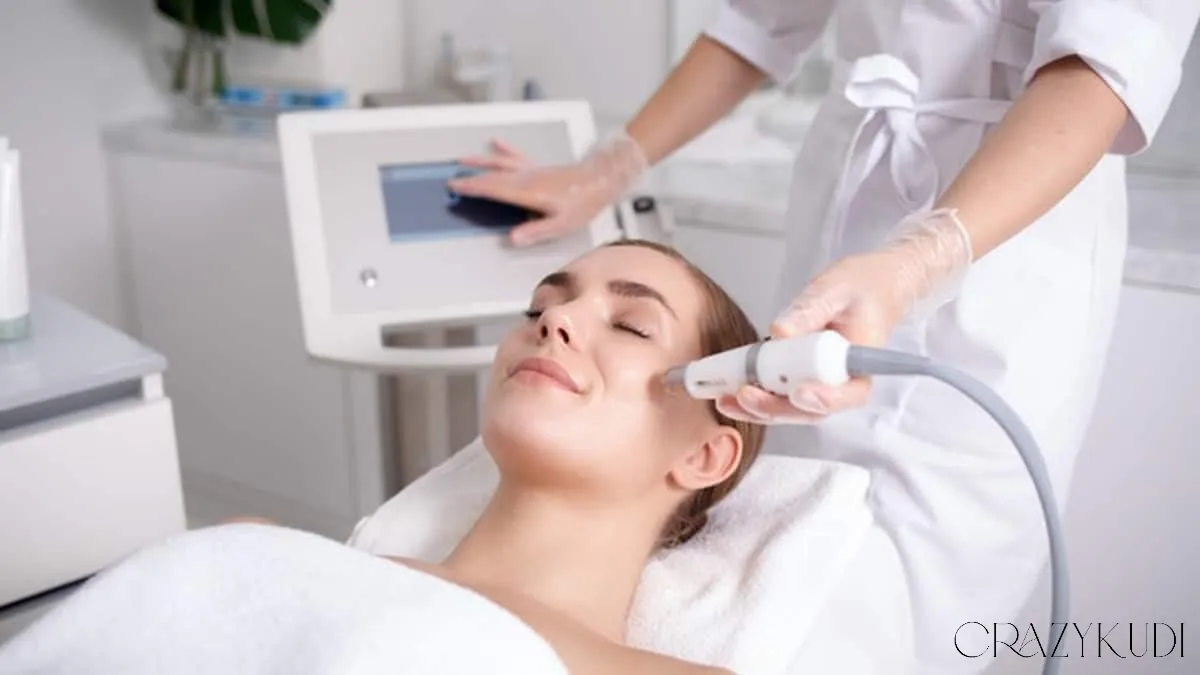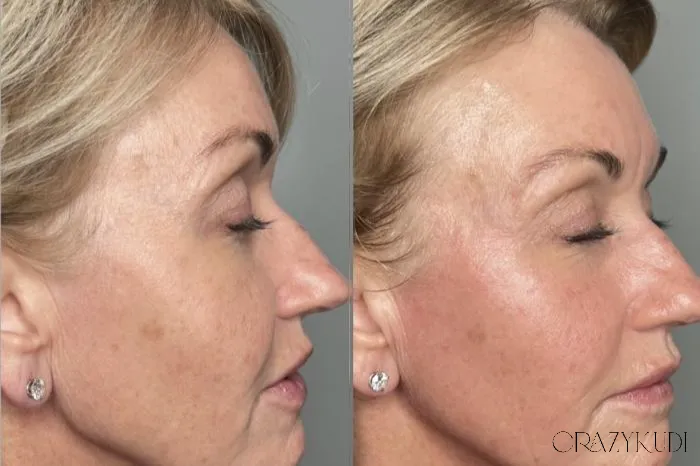In the ever-evolving field of aesthetic dermatology, patients are increasingly seeking effective, non-invasive solutions to combat the visible signs of aging – particularly skin laxity, fine lines, and wrinkles. As a board-certified dermatologist, one of the most popular and scientifically validated technologies I utilize and discuss frequently is Radiofrequency (RF) Skin Tightening. It offers a way to achieve firmer, smoother, more youthful-looking skin without the need for surgery or significant downtime.
But what exactly is radiofrequency, and how does it work its magic beneath the skin's surface? Let's break down this powerful technology.
What is Radiofrequency (RF) Energy in Skincare?
At its core, radiofrequency is a type of energy that falls on the electromagnetic spectrum. In the context of cosmetic dermatology, specialized devices are used to deliver controlled RF energy through the skin's surface (epidermis) to target the deeper layers, primarily the dermis. The key principle is generating therapeutic heat within these deeper tissues.
How Does RF Skin Tightening Work? The Science Simplified
The effectiveness of RF skin tightening hinges on the controlled heating of the dermis. Here’s what happens:
- Targeted Dermal Heating: The RF device delivers energy that creates electrical resistance within the dermal tissues. This resistance generates precise, controlled heat at specific depths, typically reaching temperatures between 40-43°C (or sometimes higher with specific devices and techniques). Crucially, the overlying epidermis is often kept cooler via integrated cooling mechanisms in the device, ensuring safety and comfort.
- Immediate Collagen Contraction: This generated heat causes the existing collagen fibers within the dermis to denature and contract. Think of it like shrinking intertwined fibers. This provides an immediate, albeit subtle, tightening effect that some patients notice right after treatment.
- Delayed Neocollagenesis (New Collagen Production): This is the real long-term benefit. The controlled thermal "injury" triggers the body's natural wound-healing response. Specialized cells called fibroblasts are stimulated to produce significant amounts of new, healthy collagen and elastin over the subsequent weeks and months. This process, known as neocollagenesis and elastogenesis, gradually rebuilds the skin's structural matrix.
- Result: Over time, this new collagen framework leads to firmer, thicker, tighter skin with improved texture and a reduction in the appearance of fine lines, wrinkles, and laxity.
Also read: At-Home Microneedling for Scars & Lines: Potential Benefits vs. Dermatologist Warnings
What are the Benefits of RF Skin Tightening?
- Non-Invasive/Minimally Invasive: No surgery, needles (in most purely RF devices*), or significant downtime required.
- Skin Tightening & Firming: Addresses mild to moderate skin laxity.
- Wrinkle Reduction: Softens the appearance of fine lines and wrinkles.
- Improved Skin Texture: Can lead to smoother-feeling skin.
- Contouring: Can help improve contours along the jawline, neck, and certain body areas.
- Suitable for Various Skin Types: RF energy targets deeper tissues based on electrical resistance, generally making it safer for a wider range of skin tones compared to some light-based therapies that target pigment.
*Note: Some advanced treatments combine RF with microneedling (RF Microneedling), which does involve needles but offers enhanced results for certain concerns like acne scarring and deeper textural issues.
Who is a Good Candidate for RF Skin Tightening?
Ideal candidates typically are individuals experiencing:
- Mild to moderate skin laxity (not severe sagging, which usually requires surgery).
- Fine lines and wrinkles.
- Desire for gradual, natural-looking improvement.
- Realistic expectations about the outcomes (it's improvement, not perfection or a replacement for a facelift).
- Good overall health.
RF treatments are generally not recommended for individuals who are pregnant or breastfeeding, have pacemakers or certain metal implants near the treatment area, or have active skin infections or certain autoimmune conditions affecting the skin. A thorough consultation is essential.

What Areas Can Be Treated?
RF technology is versatile and can be used on various areas of the face and body, including:
- Face: Forehead (brow lift effect), under eyes, cheeks, nasolabial folds, jawline (jowls), chin.
- Neck: Tightening loose skin ("turkey neck").
- Body: Abdomen, arms, thighs, buttocks (for mild laxity and texture improvement).
What to Expect During and After the Procedure:
- Procedure: Your skin will be cleansed. A coupling gel might be applied. The provider moves a specialized handpiece over the treatment area. You will typically feel a deep heating sensation, which should be tolerable. Most devices have built-in cooling for comfort and safety. Treatment time varies depending on the area (30-90 minutes).
- Downtime: Usually minimal to none. You might experience temporary redness, slight swelling, or warmth in the treated area, typically resolving within hours to a day or two. You can usually return to normal activities immediately.
- Sessions: While some protocols involve a single session (like certain Thermage treatments), many devices require a series of treatments (e.g., 3-6 sessions) spaced several weeks apart for optimal results.
Results: When Will I See Them and How Long Do They Last?
- Timing: Some subtle tightening might be visible immediately due to collagen contraction. However, the significant results from new collagen production appear gradually over 2-6 months following the treatment series. Patience is key!
- Longevity: Results can last for a year or more, but the natural aging process continues. Maintenance treatments are often recommended (e.g., annually or as advised) to preserve the benefits. Lifestyle factors like sun protection and healthy habits also play a role.
Also read: At-Home Dermarolling: A Dermatologist's Guide to Potential Benefits, Risks, and Safe Practices
Potential Risks and Side Effects:
When performed by a qualified and experienced provider using appropriate settings, RF skin tightening is generally safe. Potential side effects are usually mild and temporary:
- Redness, swelling, warmth (common)
- Rare risks: Burns, blistering, changes in pigmentation (usually transient), temporary nerve sensitivity, or unwanted fat atrophy (lipoatrophy) if incorrect technique or parameters are used, particularly over bony areas or areas with little subcutaneous fat. Choosing a skilled provider minimizes these risks.
Conclusion:
Radiofrequency skin tightening is a valuable, science-backed tool in our dermatological arsenal for addressing mild-to-moderate skin laxity and improving skin quality without surgery. It works by safely heating the deeper layers of the skin to contract existing collagen and, more importantly, stimulate the long-term production of new collagen. While results are gradual and require patience, RF treatments can yield noticeable, natural-looking improvements in skin firmness and texture. If you're considering non-surgical skin rejuvenation, schedule a consultation with a board-certified dermatologist to discuss if RF skin tightening is the right approach for your specific needs and goals.

